Blackfly hatch thwarts local newsletter for several weeks
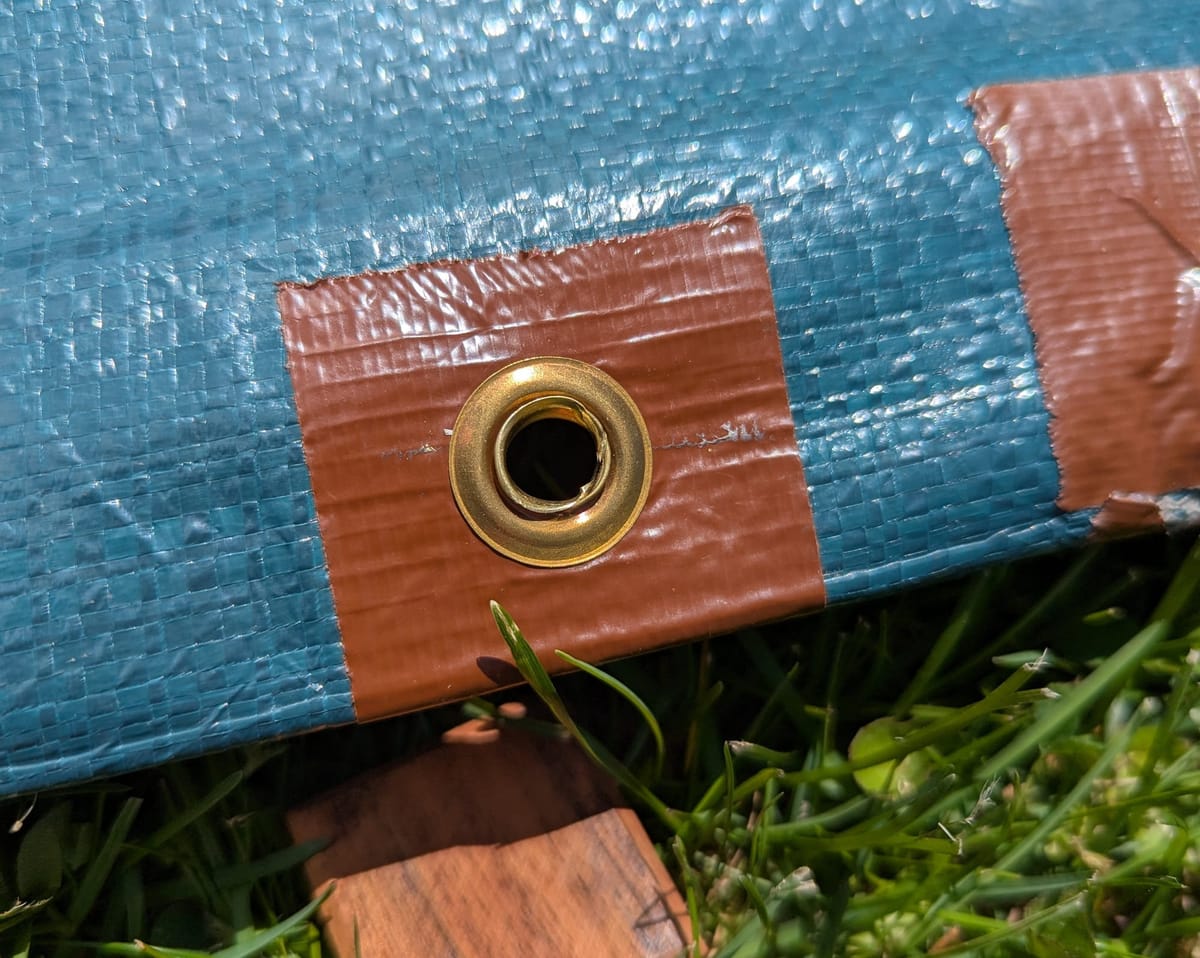
Hey all, the newsletter schedule's been off because I've been getting eaten alive by blackflies, and the itching has been making it very hard to concentrate when I sit down to write things up. Here's my best attempt to catch you all up:
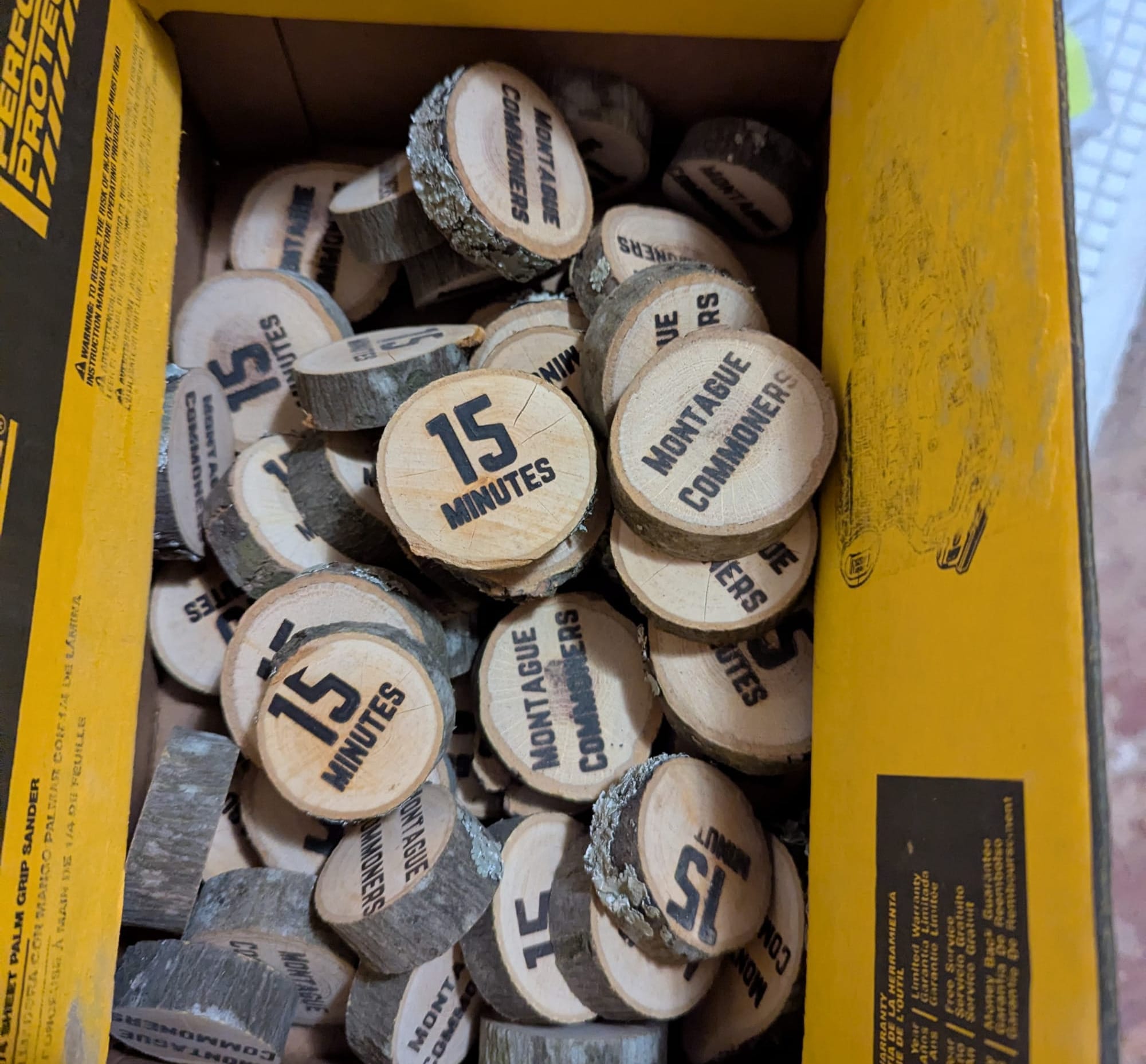
The biggest news of the week is that my semi-secret new project is finally ready for the "figure out how to explain it to people" stage. Those of you who have come down to our Artisan Market booth have probably noticed that most of what we sell is priced in hours rather than dollars, and you're about to find out why.
One of our core mottos at Montague Commoners is "share the labor, share the harvest". We like to find projects where many hands can make light work, and where a group of people working together can accomplish a lot more than they could working separately. Down at the sugarbush, it's easy to take the hours that everyone puts in and do the math to determine each person's syrup share. But when we're inoculating mushroom logs or planting trees, it's much harder to calculate the "yield".
Here's where I confess that I am a HUGE geek when it comes to alternative economic models. I've been reading everything from academic textbooks to sci fi novels about them since I was a teenager. Every time someone at the market asks how Montague Commoners got its name, I have to stop myself from launching into a 45 minute infodump about the concept of the Commons and the history of communal land management practices.
And that's what's been tripping me up as I've tried to write an explanation of the new time tokens. At their simplest level, they're pretty easy to understand. Participate in our projects, get tokens, redeem tokens for stuff that we've made and contributed to the Commons. But layered underneath that is 20 years of social, psychological, and economic theory, as well as my hopes and dreams for what Montague Commoners might become over the next 50 years. It's a huge iceberg, and it's hard to figure out how to chip away at it a bit a time. I think that over time, they could become a valuable tool in a local cooperative economy. But I haven't figured out how to explain the concept I have in my head without turning myself into the Red String Guy meme and overwhelming people with too many details.

So for now, here's what you need to know:
- You can earn tokens by putting time into our projects, whether that's upcycling aluminum cans at the Artisan Market (more on that later in this email) or taking the lead on organizing a neighborhood mutual aid project.
- You can use tokens to buy most of the things we sell at the market. From time to time, this may include items that won't be available for cash sale, because I am a stubborn artist type and I like taunting the cash economy with things it can't have 😉 This will likely include maple syrup from my personal reserve, so if you weren't part of this year's sugarbush it's a rare opportunity to get your hands on some.
- The goal is to get beyond an automatic "1 Hour = $30" substitution, and get people thinking about what contributing back to the Commons might look like for them.
- For someone who enjoys outdoor entertaining, it might be hosting a cookout to split some kindling for the sugarbush.
- For someone who enjoys making comics and zines, it might be joining the project to document the community sugarbush and help people replicate it in other communities.
- For someone who just wants to show up when they can and not have to plan anything, it might look like participating in the weekly upcycling project at the Artisan Market for a few weeks.
- I'll be trying to put together a list of "available quests" over the next few weeks, but I'm also very open to sitting down with folks one-on-one to talk about what skills they have, what skills they'd like to learn, and what sort of participation in the Commons they might enjoy.
- If anyone starts sniffing around this project and using the word "blockchain", it's important to laugh at them until they go away.
- That's not coming from a place of ignorance. I've been a huge cryptography geek since I was a teenager, and I've been following the development of cryptocurrencies since they were a purely hypothetical concept.
- It's been very weird to watch so much of the world lose its mind because a few thousand TechBros completely missed the point of Snow Crash.
- The entire point of this project is that it exists in the real world. It's about neighbors coming together to create and exchange resources and build stronger social connections while we do so. Blockchain technology is about facilitating transactions in the absence of trust, and trust is exactly what we're trying to build.
- Financial speculation markets poison everything they touch, and we don't want them getting within a thousand yards of our little cooperative economy experiment.
- That's not coming from a place of ignorance. I've been a huge cryptography geek since I was a teenager, and I've been following the development of cryptocurrencies since they were a purely hypothetical concept.
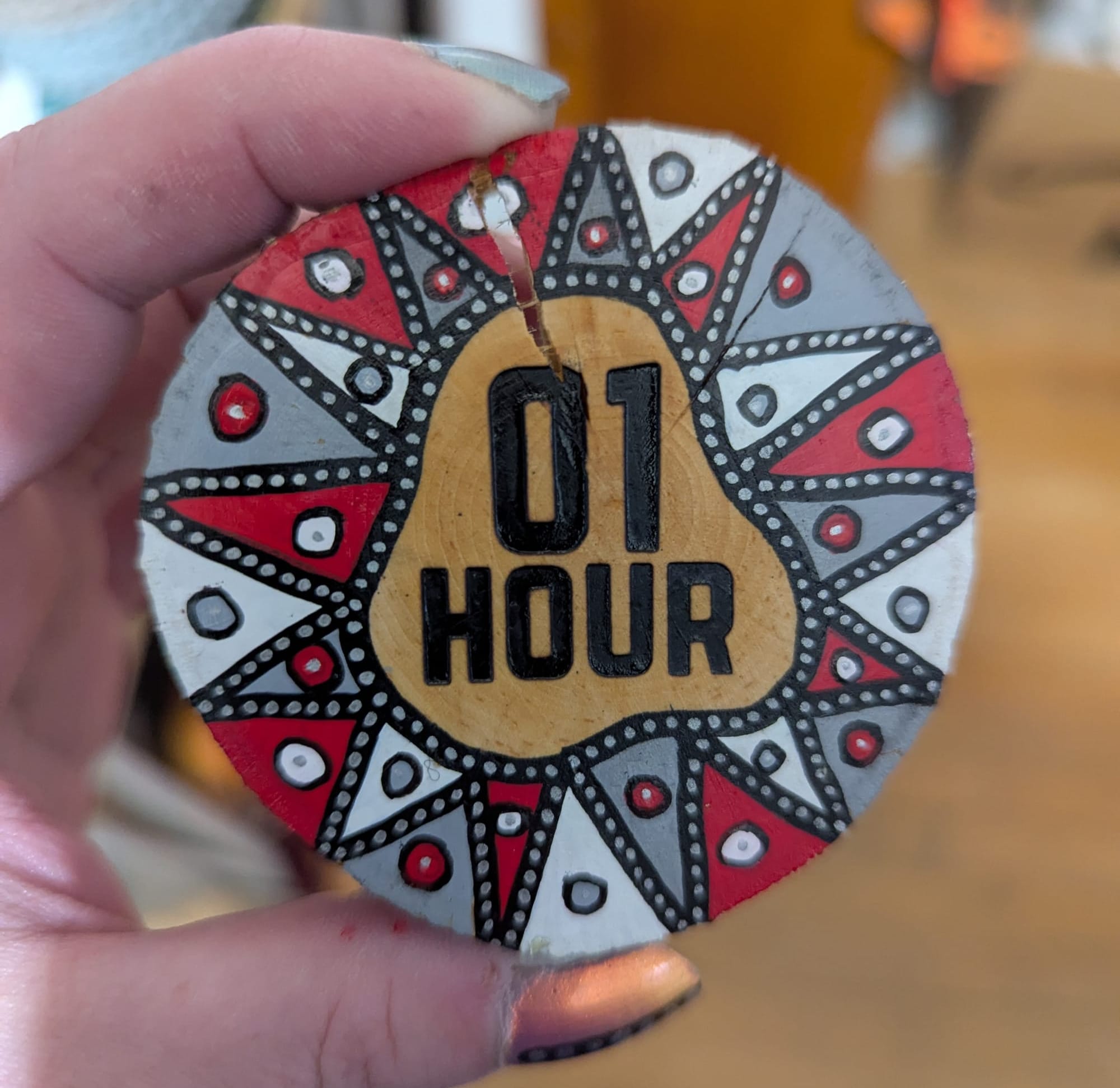
So, onto "Try to Explain the New Shenanigan" Chapter Two. This part is a Call For Artists!
The goal is to have all the higher-denomination tokens embellished with hand-drawn artwork. An artist spends an hour decorating a one-hour token, and by doing so they turn it into the physical embodiment of an hour of labor. They can then trade that token for other goods that represent an hour of labor, either at our Artisan Market booth or, eventually, out in the community.

I've been painting a token or two in the evenings after dinner, and it's been a nice way to incorporate some creative time into my routine. If you're interested in participating as an artist, come talk to me down at the Artisan Market. I'll give you some blank tokens and we can talk more about how the project works.
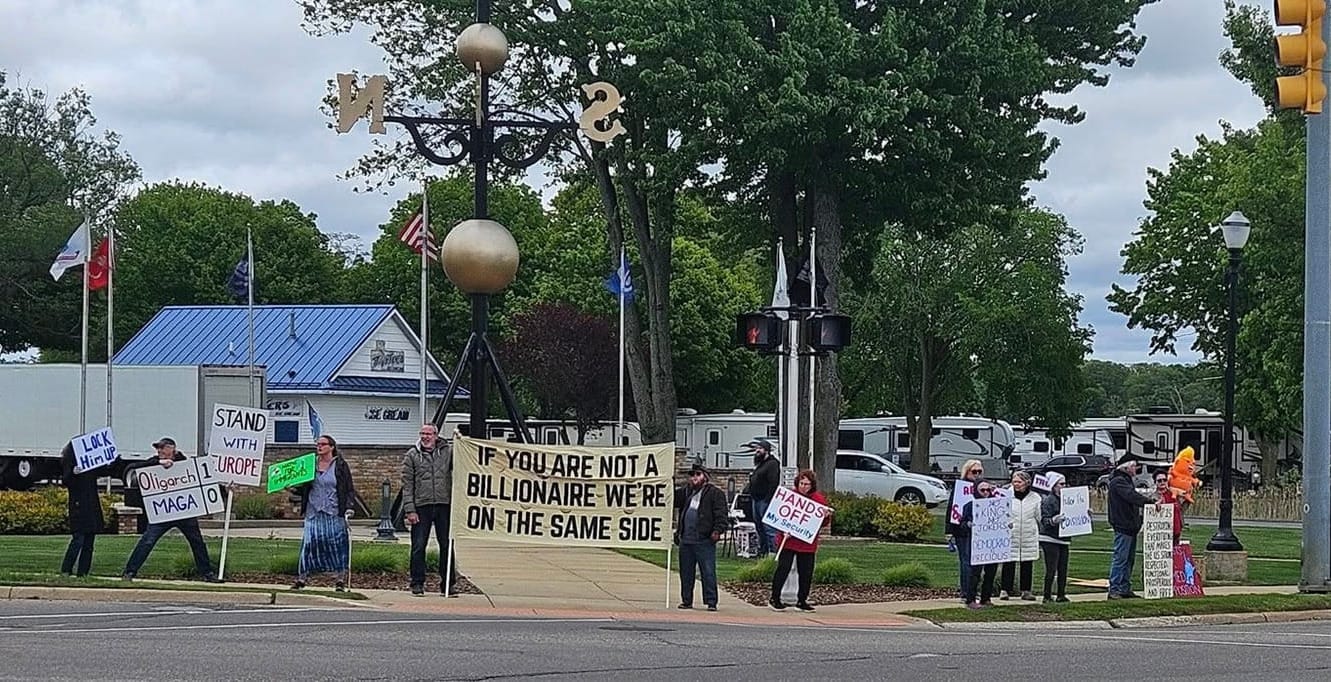
In Dance For Democracy news, the new banner was finally able to make its debut, and it's been getting a pretty good response. The wind holes make it a little easier to keep hold of when it's windy, but not as much as I'd like. For banner #3 I might try starting with a piece of shadecloth instead of a sheet. I could applique the letters on in a contrasting fabric, and wind would be able to pass through most of the surface of the banner. (Can you tell that I spend about an hour a week thinking about how to make that thing less of a pain in the ass 😆)
We've been getting ~50 people a week down at the protest, and it's been going pretty consistently from noon to 1pm most Fridays. I'm probably going to expand the playlist by a few songs in coming weeks, so now's a good time to submit your suggestions.

Lastly, we had our first tarp repair day. We didn't get a ton of public participation, but I got five of our own tarps patched up, and I got some practice in with the grommet tool. It worked as a proof-of-concept, and served as a good dry run for future tarp repair days where we actually recruit participants 😂
Coming Up This Week
- Join us on Friday at Noon for Dance for Democracy down at the Weathervane, and head over to North Grove afterwards for lunch and postcard writing. It's a good opportunity to work some of the stress out of your body, and meet like-minded locals. Stop by our mutual aid table for free Narcan kits, first aid kits, and Dance for Democracy songbooks.
- On Saturday, join us down at the Artisan Market to browse our wares and learn about June's monthly upcycling project: aluminum can plant tags
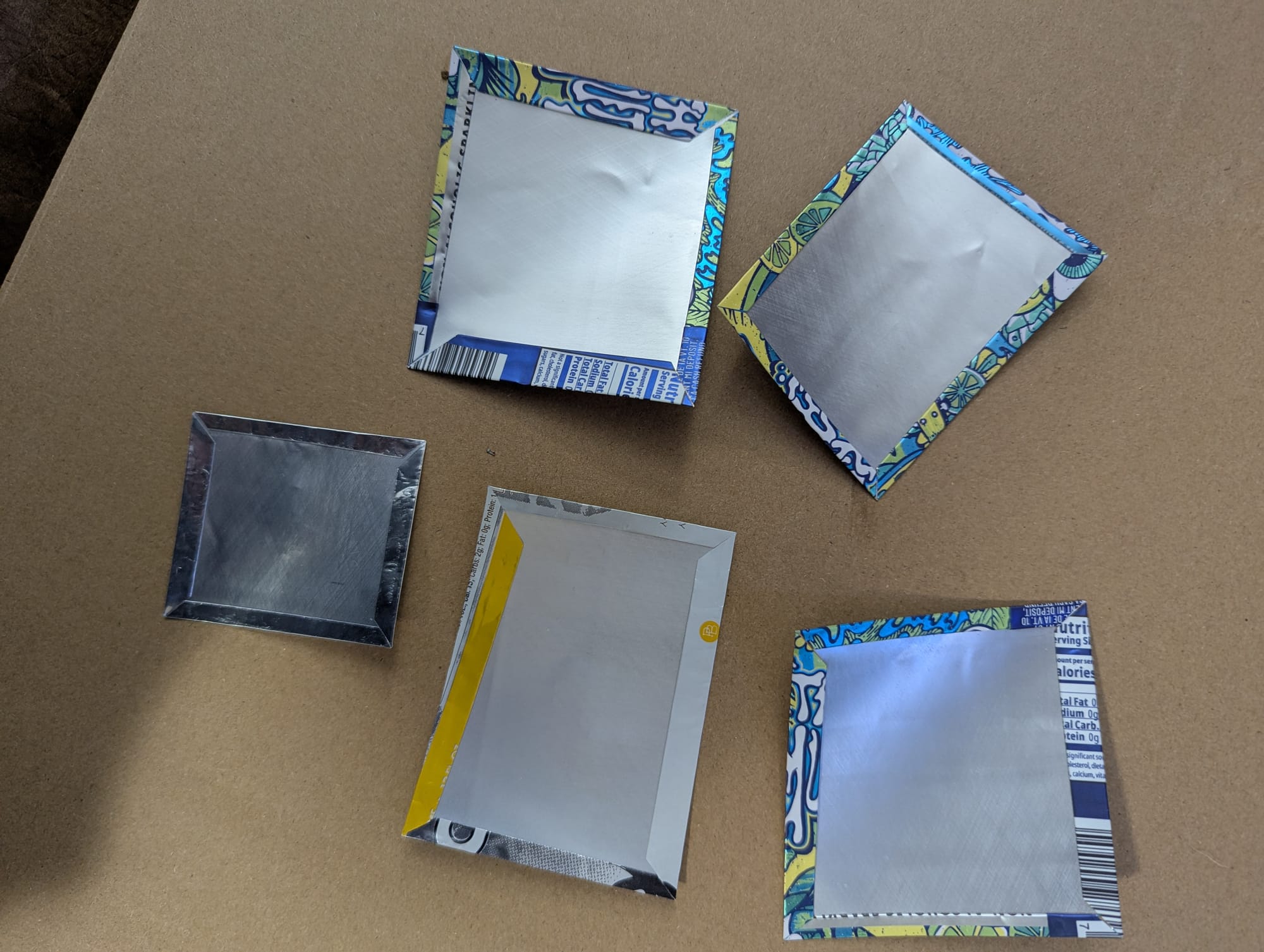
- We will be accepting clean empty aluminum cans as a form of payment at the Artisan Market all month.
- We'll have a group project station at the Market for turning aluminum cans into useful metal tags with no sharp edges. Nate and I have been refining our techniques over the past month or so, and we're looking forward to passing along what we've figured out. Participation is free, and anyone who decides to give their finished tags back to the Commons will get some of the new time tokens in return.
- We'll be posting more about this project as the month goes on.
Food of the Week
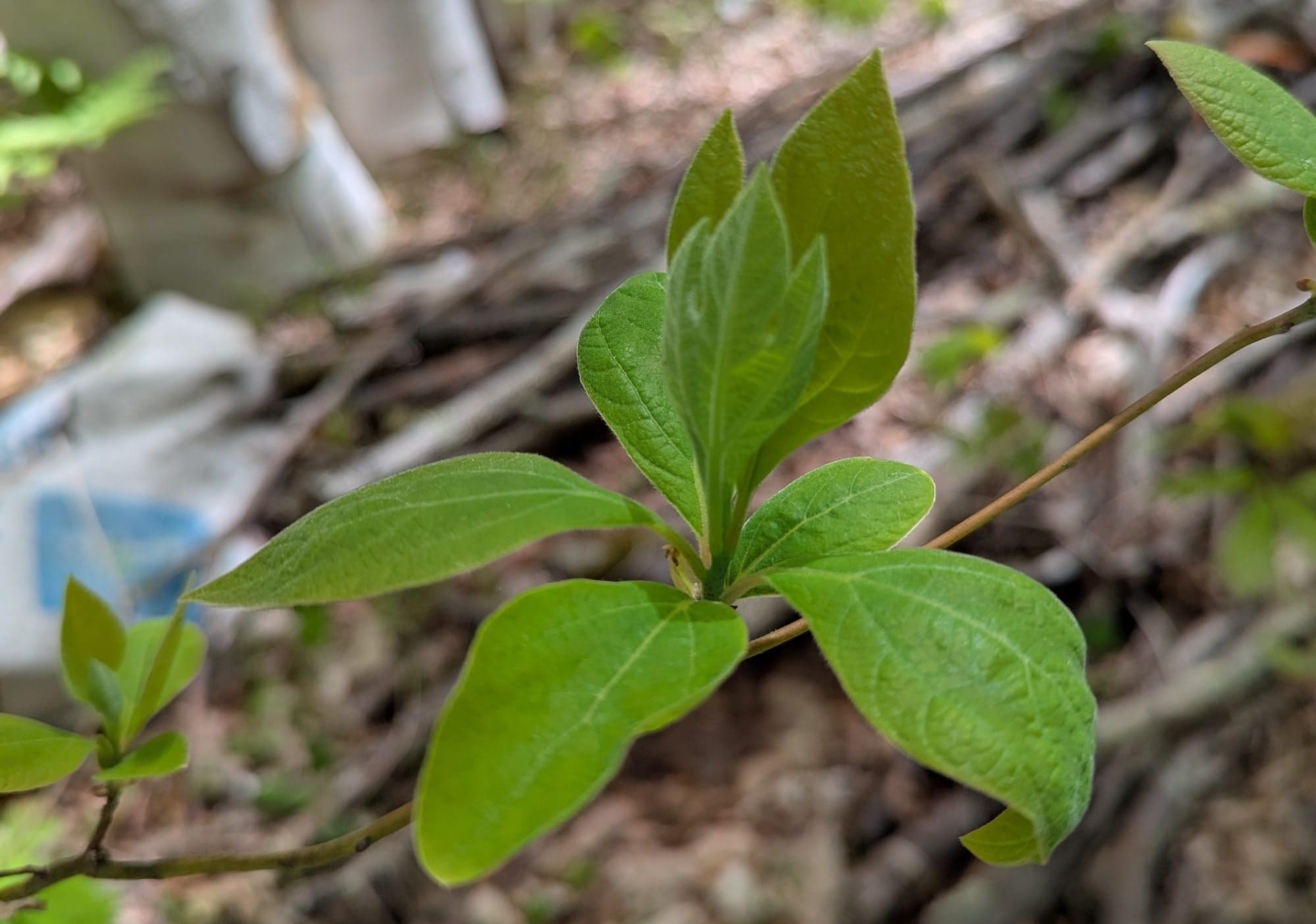
Now is the perfect time of year to harvest some sassafras leaves! The fresh leaves are very tender and have a delicate root beer flavor. Right now, basically all the leaves are still fresh. Sassafras grows like a weed around here, especially along the edges of wooded areas. I like to snack on the leaves when I'm out in the woods, and Nate likes to mix them into salad. You can also dehydrate the leaves to make filé powder, a thickening agent used in traditional gumbo.
Solidarity Steps
There's a hyper-local solidarity opportunity this week! Sarah Filley is a local permaculture practioner and pollinator activist who organized the pollinator garden at White Lake Community Library. She's going through treatment for Stage 4 cancer, and there's a fundraiser to help her cover expenses while she's in treatment. If you're in a position to help out, it's a worthy cause.
Recommendation Corner
The National Council of Elders was founded in 2011 to bring together elders with long-time experience in the civil rights struggles of the 20th century and put them in touch with younger people engaged in the civil rights struggles of today. They have a podcast featuring intergenerational conversations between activists and organizers, and it's one of my favorite places to turn in scary times. It's nice to be reminded that whatever happens, movements have been through things like this before, and we have time-tested strategies to face them.
Concession to Capitalism
Thanks to an anonymous benefactor after the last newsletter, we're almost half-way to having this year's newsletter hosting costs covered. If you enjoy this newsletter and you want to help make it possible, chip in a few bucks over athttps://ko-fi.com/montaguecommoners.
This Week's Nails


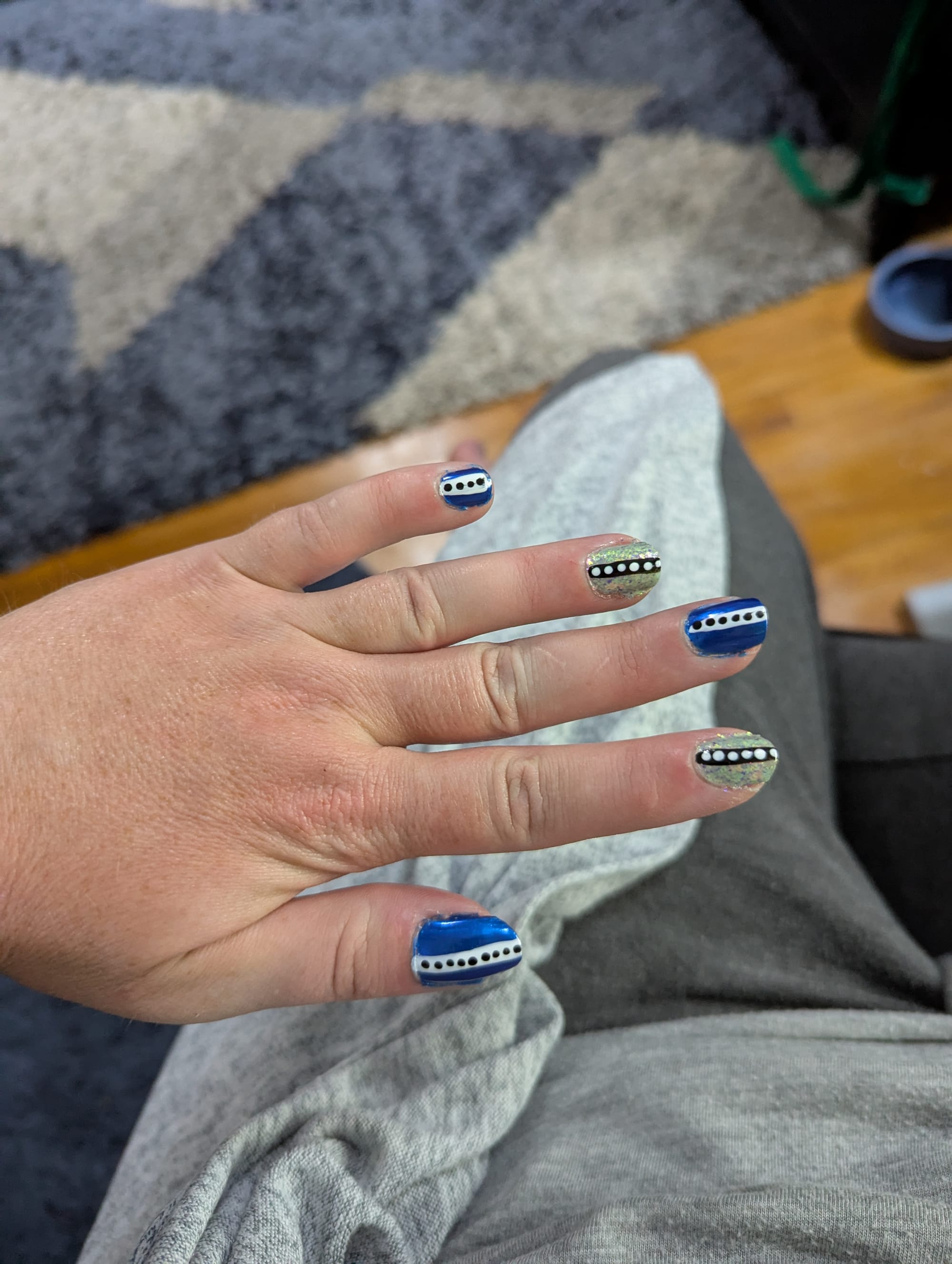

You made it to the end of the newsletter! That means you get to see this week's nails. For new folks, I usually write up this newsletter while I'm doing my nails on Sunday afternoon, and I stick a photo of the finished manicure on the end of the newsletter as a reward for people who make it all the way through.
Thanks to Sue V for the medium blue polish! I wanted to give it a try, so I paired it with a light blue flakey polish to add some contrast. I rushed things a little bit with the top coat, and some of the dots got a little smudged, but I'm still happy with how it turned out.
